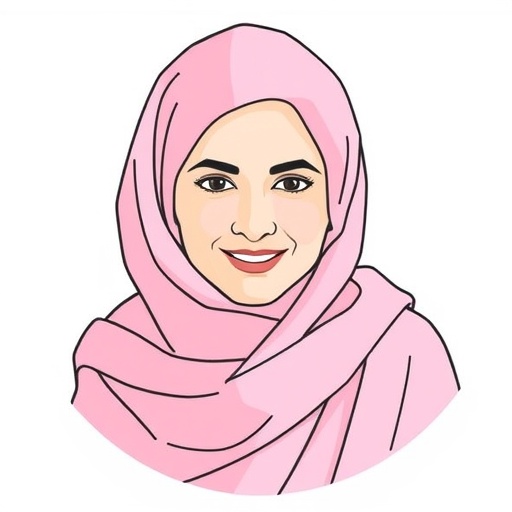In a pioneering multicenter study published in BMC Cancer, researchers have unveiled a critical evaluation of breast cancer quality-of-care indicators across Iran, shedding light on the substantial disparities between current clinical practices and established European standards. This comprehensive analysis, drawing data from over six thousand patients, offers a revealing glimpse into the prevailing challenges faced by healthcare systems in low- and middle-income countries addressing breast cancer management. The study not only identifies significant gaps but also underscores the urgent need for targeted interventions to elevate treatment outcomes in such regions.
Breast cancer remains a leading cause of morbidity and mortality worldwide, posing considerable public health challenges. Despite advances in diagnostics and therapeutics, the quality of care can vary dramatically between different healthcare environments, particularly when comparing high-income countries with their lower-income counterparts. To address this issue, the European Society of Breast Cancer Specialists (EUSOMA) formulated a comprehensive set of quality-of-care indicators in 2017, designed to standardize and elevate breast cancer management practices across Europe. These indicators encompass a broad spectrum of clinical and procedural benchmarks, ranging from diagnostic accuracy to treatment timeliness and follow-up care rigor.
In Iran, where breast cancer incidence has been rising steadily over the past decades, the application and adherence to these EUSOMA standards remained largely unexplored prior to this investigation. The study, led by Rajabpour and colleagues, conducted a meticulous retrospective analysis using data extracted from the Clinical Breast Cancer Registry, a nationwide database coordinated across 11 provinces. This registry provided a rich repository of clinical information, enabling a robust evaluation of 21 designated quality indicators integral to comprehensive breast cancer care.
The methodological rigor of this study lies in its scale and scope. By encompassing a patient cohort of 6,293 individuals, the research achieved substantial statistical power and regional representation. The indicators assessed included, but were not limited to, timely diagnostic biopsies, surgical intervention quality, adjuvant therapy appropriateness, and long-term surveillance protocols. Each parameter was benchmarked against EUSOMA’s threshold criteria, offering a clear metric for assessing deviations and areas necessitating improvement.
Findings from the analysis starkly illuminated the systemic shortfalls within Iran’s breast cancer care framework. Out of the 21 quality indicators reviewed, a striking 15 fell short of the minimum standards established by EUSOMA, with many lagging by more than 5 percent below the expected compliance rates. This pattern indicates not only isolated deficiencies but systemic trends that may compromise patient survival and quality of life. Notably, certain critical aspects such as the timeliness of initiating adjuvant therapies and adherence to standardized surgical protocols emerged as particularly underperforming domains.
The implications of these findings are profound, as suboptimal adherence to quality standards often translates into higher recurrence rates, increased treatment-related complications, and in tragically many cases, elevated mortality. The study’s revelations highlight an urgent need for systemic policy reforms aimed at standardizing breast cancer care protocols nationwide. This includes fortifying healthcare infrastructure, expanding specialized training programs for oncology practitioners, and integrating international best practices more effectively into clinical workflows.
Moreover, the study accentuates the broader context of healthcare disparities prevalent in low- and middle-income countries (LMICs). Iran’s healthcare challenges, while unique in certain respects, echo a wider narrative observed in many LMICs where resource limitations, infrastructural constraints, and workforce shortages hinder the delivery of optimal cancer care. This research therefore serves as a clarion call for global health stakeholders to mobilize collaborative efforts that prioritize capacity building and knowledge transfer initiatives.
Technically, evaluating quality-of-care indicators requires sophisticated data management and analytics capabilities, which can pose a significant hurdle in resource-constrained settings. The successful aggregation and analysis of data from multiple provincial registries in this study demonstrate the feasibility and utility of establishing robust cancer registries in LMICs. Investing in such registries facilitates continuous monitoring and quality assurance, which are indispensable for iterative improvements in clinical practice and patient outcomes.
The study also prompts critical reflection on the adaptability of standardized guidelines, such as those issued by EUSOMA, within diverse healthcare ecosystems. While these benchmarks offer an invaluable framework, their implementation necessitates contextualization to accommodate local healthcare realities. This may involve adjusting certain criteria or augmenting infrastructure to meet the nuanced needs of regional patient populations without compromising the integrity of care standards.
In conclusion, Rajabpour et al.’s research provides an indispensable evidence base that informs both clinical practice and health policy in Iran and comparable regions. The clear identification of quality-of-care deficits paves the way for targeted interventions aimed at bridging gaps, enhancing practitioner training, and ultimately improving breast cancer prognosis. Crucially, this study catalyzes an imperative dialogue on equitable cancer care delivery globally, emphasizing that quality metrics are not just benchmarks but lifelines that can transform patient journeys.
Looking forward, sustained efforts are needed to expand such quality assessments to other cancer types and therapeutic areas within Iran and beyond. The integration of innovative technologies, including telemedicine and artificial intelligence-driven diagnostics, holds promise to accelerate improvements in quality and accessibility. Furthermore, fostering international partnerships can expedite knowledge exchange and resource mobilization, ensuring that standards like EUSOMA’s become attainable realities in diverse healthcare contexts.
This study stands as a testament to the power of comprehensive data-driven research in uncovering systemic healthcare challenges and stimulating actionable change. As global health agendas increasingly focus on non-communicable diseases, investigations such as this underscore the critical importance of quality measurement in crafting effective, patient-centered cancer care strategies worldwide. The journey toward closing the care quality divide is arduous but essential, and Iran’s experience offers valuable lessons and hope for many striving to surmount similar barriers.
Subject of Research: Evaluation of breast cancer quality-of-care indicators in Iran using EUSOMA 2017 standards.
Article Title: Evaluating the breast cancer quality of care indicators in Iran; multicenter study.
Article References:
Rajabpour, M.V., Seyyedsalehi, M.S., Nahvijou, A. et al. Evaluating the breast cancer quality of care indicators in Iran; multicenter study.
BMC Cancer 25, 925 (2025). https://doi.org/10.1186/s12885-025-14260-3
Image Credits: Scienmag.com




